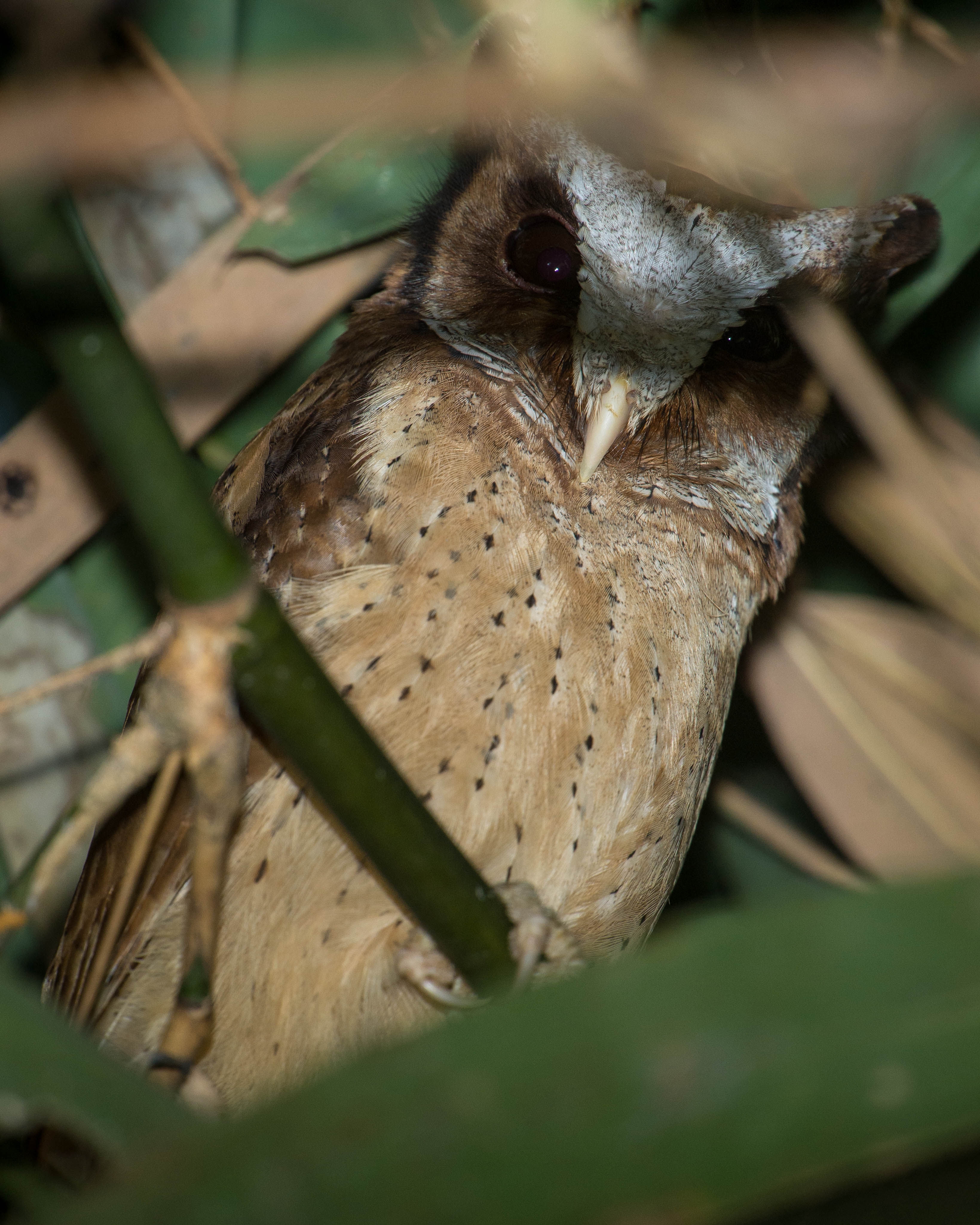| Citation |
|
Description |
Geographic Range [top]
Range Description: Otus sagittatus is known from Tenasserim, Myanmar, south-west Thailand and Peninsular Malaysia (BirdLife International 2001). It appears to be locally distributed and scarce throughout its range. However, its true status is unclear as it is difficult to detect and it may be more common than records suggest.
Countries occurrence:
Native:
Malaysia; Myanmar; Thailand
Vagrant:
Taiwan, Province of China
Additional data:
? Continuing decline in area of occupancy (AOO): Unknown
? Extreme fluctuations in area of occupancy (AOO): No ? Estimated extent of occurrence (EOO) - km2: 149000
? Continuing decline in extent of occurrence (EOO): Unknown ? Extreme fluctuations in extent of occurrence (EOO): No
? Number of Locations: 11-100 ? Continuing decline in number of locations: Unknown
? Extreme fluctuations in the number of locations: No
? Upper elevation limit (metres): 700
Range Map: Click here to open the map viewer and explore range.
Population [top]
Population: The population size is preliminarily estimated to fall into the band 2,500-9,999 mature individuals. This equates to 3,750-14,999 individuals in total, rounded here to 3,500-15,000 individuals.
Trend Justification: Forest loss throughout this speciess range has been rapid; hence, this forest specialist is suspected to be declining rapidly as well. However, the species remains very poorly known and more accurate studies are required.
Current Population Trend: Decreasing
Additional data:
? Number of mature individuals: 2500-9999 ? Continuing decline of mature individuals: Yes
? Extreme fluctuations: No ? Population severely fragmented: No
? No. of subpopulations: 2-100 ? Continuing decline in subpopulations: Unknown
? Extreme fluctuations in subpopulations: No ? All individuals in one subpopulation: No
? No. of individuals in largest subpopulation: 1-89
Habitat and Ecology [top]
Habitat and Ecology: It is resident and nocturnal in old-growth and regenerating evergreen or mixed deciduous forests of level lowlands and hill-slopes to at least 700 m. Limited mist-netting data indicates that it sometimes frequents dense or open lower storeys of mature forest, but may not inhabit recently logged forest. In Malaysia and Thailand, the breeding season is apparently February-March. Insects, chiefly moths, are its only documented food items.
Systems: Terrestrial
Continuing decline in area, extent and/or quality of habitat: Unknown
Generation Length (years): 3.7
Movement patterns: Not a Migrant
Threats [top]
Major Threat(s): If this species is a lowland forest specialist, extensive lowland forest loss, degradation and fragmentation, primarily through logging, development and conversion for agriculture, pose the greatest threats across its range.
Conservation Actions [top]
Conservation Actions: Conservation Actions Underway
CITES Appendix II. It occurs in several protected areas, including Kaeng Krachan National Park, Huai Kha Khaeng, Khlong Saeng, Hala-Bala and Khao Banthad Wildlife Sanctuaries, Thailand and Pasoh Forest Reserve, Malaysia. It probably occurs in the recently established Myinmoletkat Biosphere Reserve, Myanmar.
Conservation Actions Proposed
Conduct playback and mist-netting surveys across its range to establish its distribution, status and habitat requirements. Afford effective protection to all forest in relevant protected areas. Campaign for reduced deforestation of lowlands in southern Myanmar, Thailand and Malaysia.
Citation: BirdLife International. 2012. Otus sagittatus. The IUCN Red List of Threatened Species 2012: e.T22688548A38006247. http://dx.doi.org/10.2305/IUCN.UK.2012-1.RLTS.T22688548A38006247.en. Downloaded on 28 September 2016.
Disclaimer: To make use of this information, please check the .
Feedback: If you see any errors or have any questions or suggestions on what is shown on this page, please provide us with feedback so that we can correct or extend the information provided
|

